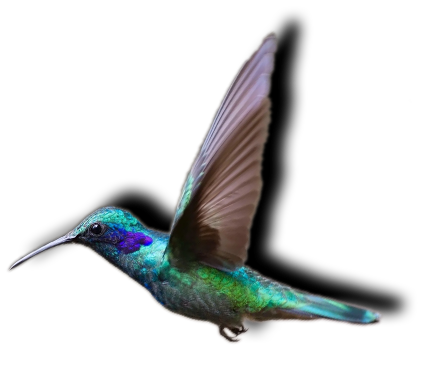


王 放
职称:教授/ 博士生导师
邮箱:wfang@fudan.edu.cn
研究方向:1. 野生动物的种群动态、种间关系和适应性; 2. 珍稀濒危物种的保护生物学;3.城市生物多样性的维持机制和保护管理。
个人简介
男,博士,教授/ 博士生导师
2001-2005 北京大学生命科学学院 学士;
2006-2012 北京大学生命科学学院 博士;
2012-2015 美国史密森学会Smithsonian Institution 博士后;
2015-2018 美国密歇根州立大学Michigan State University 博士后;
2018-2024 复旦大学生科院研究员(青年);
2024-今 复旦大学生命科学学院教授
主要研究方向
1. 野生动物的种群动态、种间关系和适应性:以秦岭、六盘山等区域的生态系统作为研究区域,研究生物多样性的组成、群落结构的维持、关键种的种群变化趋势、种间关系对生物多样性维持的支持作用等;2. 珍稀濒危物种的保护生物学;以大熊猫、华北豹、大灵猫、小灵猫等受胁物种作为研究对象,研究珍稀濒危物种对于人类活动的时间和空间响应、影响种群生存力的关键限制因素等,推动濒危珍稀物种的保护管理;
3.城市生物多样性的维持机制和保护管理:以上海城市生态系统中的貉、小灵猫作为研究对象,研究物种在城市环境中的行为变化、个性差异、迁移扩散等,开展公民科学等新型研究组织形式,支持城市生物多样性的保护管理。
热忱欢迎对以上研究内容有兴趣的同学报考,我们的研究工作涉及种群生态学、动物学、保护生物学、社会经济学等学科领域。研究对象包括珍稀濒危的大熊猫、华北豹、绿孔雀等物种,也包括貉等快速适应城市环境的物种。科研工作将为生物多样性的保护和管理提供支持。
同时欢迎有志于从事科学研究的本科同学提前联系,以了解课题研究的各方面情况。
奖项和公职
NASA-MSU Professional Enhancement Award;
上海市科普教育创新奖 科普贡献奖;
联合国生物多样性公约大会(COP15)“生物多样性100+全球典型案例”
上海市生物多样性优秀案例
环保部“十佳公众参与案例”
大熊猫国家公园专家委员会;
上海市自然保护地专家委员会;
上海市生物多样性专家委员会
上海市野生动物保护协会
世界自然保护联盟物种生存委员会(IUCN-SCC)大熊猫专家组主席、羊亚科工作组
代表性成果(*通讯作者)
Zhao, Q., Wang, Y.,... & Wang, F.* (2024). A path to human‐raccoon dog harmony: Identifying factors influencing the tolerance of urban residents in Shanghai towards a neglected species. People and Nature.• 封面文章
Wang, Y., Zhao, Q.,... & Wang, F.* (2024). Behavioral plasticity of raccoon dogs (Nyctereutes procyonoides) provides new insights for urban wildlife management in metropolis Shanghai, China. Environmental Research Letters, 19(10), 104063.
Weng, Y., McShea, W. J., ..., & Wang, F.* (2024). Who let the dog out? Dog owner attitudes and economics regulate the potential negative impact of domestic dogs on wildlife in a reserve network. Conservation Science and Practice, e13156.
Fu, C., Wang, F.*, Zhao, Y., Zhu, Q., Luo, Y., ... , & Li, Z*. (2024). Challenges and opportunities in human dimensions behind cat–wildlife conflict. Conservation Biology, e14253.
Diao, Y., Zhao, Q., ... & Wang, F.* (2022). Predicting current and future species distribution of the raccoon dog (Nyctereutes procyonoides) in Shanghai, China. Landscape and Urban Planning, 228, 104581.
Gu, B., Weng, Y., ... & Wang, F.* (2022). Is livestock grazing compatible with green peafowl (Pavo muticus) conservation? Potential chance of peafowl-human coexistence. Biological Conservation, 275, 109772.
Zhao, Q., Diao, Y., ... & Wang, F.* (2022). Predicting future distributions and dispersal pathways for precautionary management of human-raccoon dog conflicts in metropolitan landscapes. Environmental Research Letters, 17(10), 104036.
Weng, Y., McShea, W., ... & Wang, F.* (2022). The incursion of free-ranging dogs into protected areas: A spatio-temporal analysis in a network of giant panda reserves. Biological Conservation, 265, 109423.
Diao, Y., Zhao, Q., Weng, Y., Gu, B., & Wang, F.* (2021). Temporal shifts as elusive responses to anthropogenic stressors in a mammal community. Biodiversity and Conservation, 30, 2529-2544.
Wang, F., Zhang, Z., Li, C., Sun, G., Zhao, X., & Lu, Z*. (2021). Add Himalaya's Grand Canyon to China's first national parks. Nature, 592(7854), 353-353.
Wang, F*., Winkler, J., Viña, A., McShea, W. J., Li, S., Connor, T., ... & Liu, J. (2021). The hidden risk of using umbrella species as conservation surrogates: A spatio-temporal approach. Biological Conservation, 253, 108913.
Huang, Q., Wang, F.*, Yang, H., Valitutto, M., & Songer, M. (2021). Will the COVID-19 outbreak be a turning point for China's wildlife protection: New developments and challenges of wildlife conservation in China. Biological Conservation, 254, 108937.
Wang, F.*, Zhao, Q., McShea, W. J. & Songer, M. (2018). Incorporating spatial effects changes forecasts of species' risk under global warming. Conservation Letters. e12592. • 封面文章
Wang, F.*, McShea, W. J., Li, S., & Wang, D. (2017). Does one size fit all? A multispecies approach to regional landscape corridor planning. Diversity and Distributions, 24(3), 415-425. • 封面文章
Wang, F.* & Liu, J. (2016). Conservation planning beyond giant pandas: the need for an innovative telecoupling framework. Science China Life Sciences, 60(5), 551-554.
Wang, F., McShea, W. J., Wang, D., & Li, S*. (2015). Shared resources between giant panda and sympatric wild and domestic mammals. Biological Conservation, 186, 319-325
Guan, T., Wang, F., Li, S.*, & McShea, W. J. (2015). Nature reserve requirements for landscape-dependent ungulates: The case of endangered takin (Budorcas taxicolor) in Southwestern China. Biological Conservation, 182: 63-71.
Wang, F.*, McShea, W. J., Wang, D., Li, S., Zhao, Q., Wang, H., & Lu, Z. (2014). Evaluating landscape options for corridor restoration between giant panda reserves. PloS one, 9(8), e105086.




